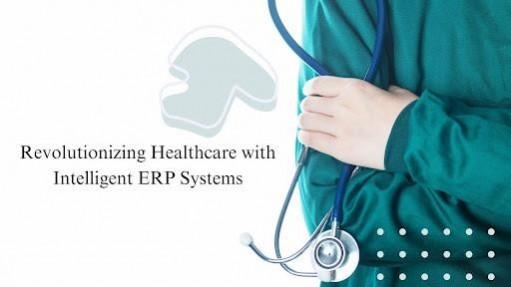
Advancements in enterprise resource planning (ERP) systems are reshaping the healthcare and life sciences industries, as highlighted by Sravan Kumar Nendrambaka, an innovative thinker in digital transformation. His exploration of intelligent ERP solutions illustrates the future of operational excellence and patient care optimization.
A Paradigm Shift in Healthcare Management
Healthcare's digital transformation journey has seen the rise of sophisticated ERP systems, notably SAP S/4HANA Cloud. By leveraging in-memory computing, these systems have introduced real-time data analytics, simplified workflows, and enhanced decision-making capabilities. Organizations adopting SAP S/4HANA report a 40% boost in operational efficiency, addressing long-standing challenges like regulatory compliance, supply chain intricacies, and real-time clinical analytics.
The Architecture Behind the Revolution
At the core of SAP S/4HANA is its in-memory computing architecture. Unlike traditional disk-based data storage, this design processes operational data directly in main memory, achieving 10x faster transaction speeds. It eliminates redundant data models, enabling seamless integration of analytical and transactional processes. This innovation is crucial for time-sensitive operations, such as clinical decision-making and resource allocation in healthcare.
Integration for Seamless Operations
SAP S/4HANA's unified digital core supports a streamlined data model, ensuring data accuracy and operational fluidity. By reducing data reconciliation efforts by 60%, healthcare providers have experienced improved patient outcomes and financial performance. This unified model connects critical functions such as supply chain, patient care, and administrative processes, fostering a more cohesive healthcare ecosystem.
Tailored Solutions for Complex Challenges
The system also includes industry-specific functionalities designed to address the unique challenges of healthcare:
- Extended Warehouse Management: Ensures compliance with Good Distribution Practices (GDP) through real-time tracking of pharmaceuticals and medical supplies.
- Revenue Accounting and Reporting: Simplifies complex billing and insurance claim processes, enhancing financial transparency.
- Core Operational Modules: Covers materials management, quality compliance, and production planning, all tailored to healthcare needs.
These modules collectively streamline operations, maintain strict compliance, and enhance the overall efficiency of healthcare services.
Driving Change with Strategic Implementation
Successful ERP implementation hinges on thorough planning and meticulous execution. SAP S/4HANA's deployment in healthcare follows a systematic approach:
- Strategic Planning: Aligning organizational objectives with regulatory needs.
- Data Migration Strategies: Ensuring integrity and compliance during sensitive data transfers.
- Change Management: Focusing on training and stakeholder engagement to minimize resistance.
These practices not only mitigate risks but also ensure the adoption of new systems with minimal disruption.
Transformative Impact Across Key Metrics
The measurable outcomes of SAP S/4HANA implementations are striking. Key performance improvements include:
- Operational Efficiency: 70% reduction in help desk tickets and 60% shorter training times for new staff.
- Financial Gains: Enhanced revenue cycle efficiency and reduced operational costs.
- Supply Chain Optimization: Lowered inventory carrying costs and improved demand forecasting.
These improvements reflect a well-rounded transformation, positively impacting both patient care and organizational sustainability.
Emerging Trends in Healthcare Technology
The future of ERP in healthcare is intertwined with advancements in artificial intelligence (AI) and machine learning. Predictive analytics, automated compliance monitoring, and intelligent resource allocation are becoming integral features. The convergence of digital health technologies, such as IoMT (Internet of Medical Things) devices and telehealth platforms, further enriches SAP S/4HANA's capabilities, enabling holistic patient management.
Sustainability is also gaining traction, with ERP systems now monitoring carbon footprints and optimizing resource utilization. This focus aligns with the healthcare industry's broader goals of reducing environmental impact while improving operational efficiency.
Sravan Kumar Nendrambaka concludes that SAP S/4HANA is more than an ERP solution; it is a cornerstone of healthcare's digital evolution. By addressing the dual imperatives of regulatory compliance and patient care, this system empowers organizations to achieve their strategic objectives. As emerging technologies continue to shape the landscape, the integration of intelligent ERP solutions promises a future of enhanced efficiency, sustainability, and innovation.








![Sky is the limit: IndiGo is now tenth largest airline by capacity globally; growth indisputable [details]](https://data1.ibtimes.co.in/en/full/767455/sky-limit-indigo-now-tenth-largest-airline-by-capacity-globally-growth-indisputable-details.jpg?w=220&h=138)








